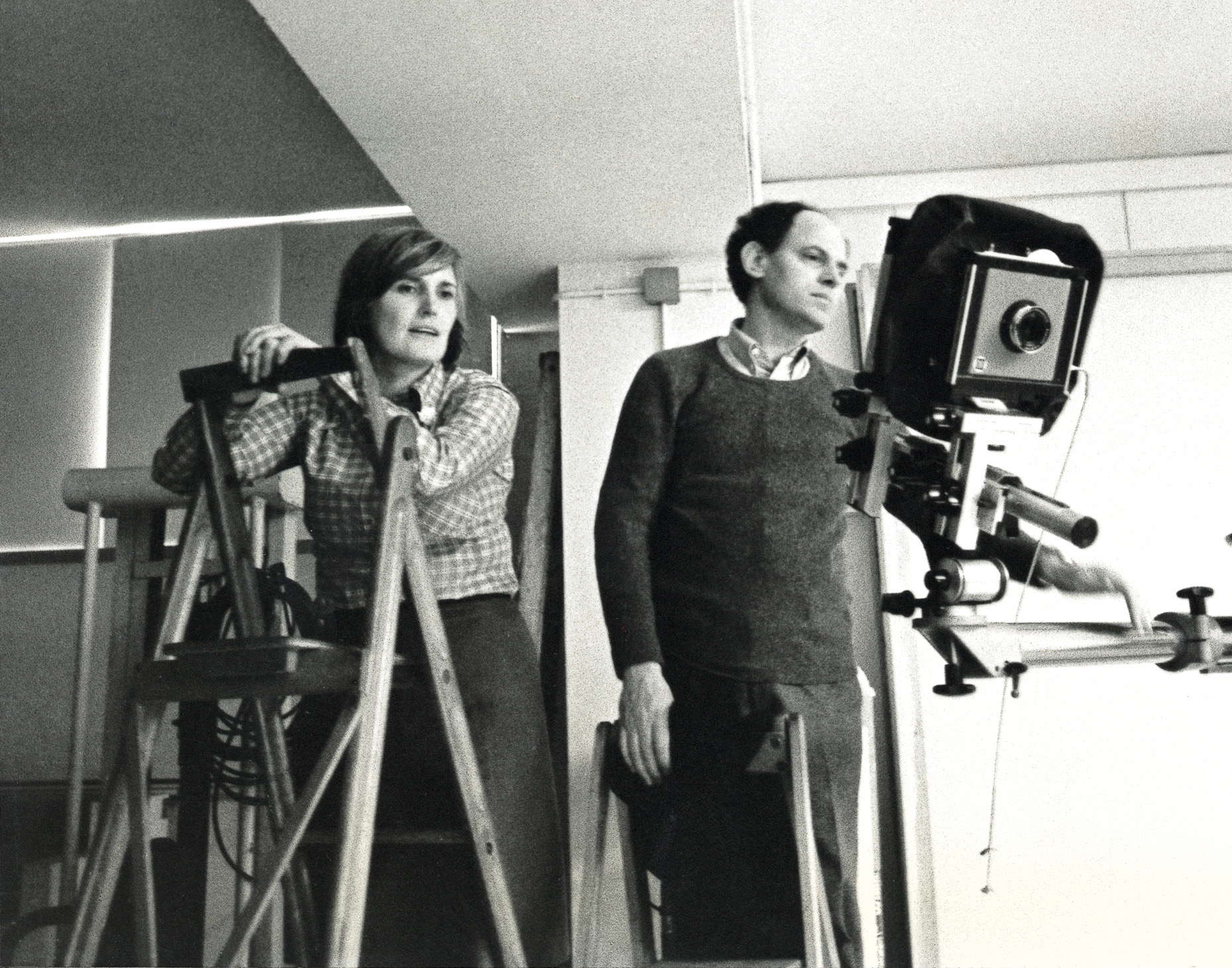Oversized glossy magazines, often imported from Europe, once offered huge photo spreads of the latest fashions, architecture, home furnishings, and design. They were look books, bibles of Continental style, full of clothing, sofas, and cars you couldn’t afford. (But a $5 magazine? Sure, why not?) But today, everything’s shrunk to a palm-sized screen, and the graphic arts suffer for it. For that reason, a kind of nostalgia seeps through the Bellevue Arts Museum exhibition Zoom: Italian Design and the Photography of Aldo and Marirosa Ballo, though the show celebrates an era that was emphatically forward-looking.
Postwar Milan began booming in the ’50s. Modern factories were churning out Fiats and Ferraris, Olivetti typewriters and Pirelli tires. Plastic suddenly became a chic, colorful material. Italians were tired of old traditions and inherited forms. Enough with history! Basta!
The Ballos were commercial photographers who took product shots, an inelegant term for often elegant telephones, chairs, and other consumer goods. They weren’t really designers, like Charles and Ray Eames, but evangelists for good design. Before Americans or Europeans could buy new creations by Ettore Sottsass or Alberto Alessi, for instance, they first saw those images in imported Italian magazines and catalogs—presented in the best possible light, which was the Ballos’ job.
For a certain kind of magazine browser with a long-enough memory, their images from Casa Vogue or Domus recall the Campari-soaked ’60s and ’70s—all sex and glamour, only with all the people taken out. They provide the context, the surrounding decor, rather like movie production designers. (You half expect Monica Vitti or Claudia Cardinale to wander into their frames, which look like stills from empty film sets.)
Organized by the Vitra Design Museum in Germany, and here making its only stop in the U.S., “Zoom” includes some 300 images from the Ballos, plus some of the products, posters, magazines, and other objects of their era. It’s very much a browser’s show, ranging from the ’50s through the unfortunate Memphis-studio design eruption of the ’80s, part of the mix-and-match postmodernist moment. (Aldo died in 1994, ending their studio’s four-decade run.) But you needn’t follow any chronological pattern. It’s more interesting to make associations among the objects, these artifacts that once promised to modernize our home and office lives.
The beautiful red Olivetti Valentine portable typewriter drops perfectly into its fitted satchel, a precursor of laptops today. A pea-green “living bed” has built-in phonograph, TV, and telephone—an entertainment center you can sleep on! Archizoom’s zebra-striped Safari conversation pit molds six sitters into an exact arrangement; it’s like something you’d expect to see in Sleeper or Blow-Up, or in a house designed by John Lautner.
The dominant aesthetic isn’t exactly mid-century modernism but something closer to a sleek, space-age futurism. The gadgets are electric, not electronic. There are adding machines and clocks with dials (some by the Milan-based German designer Richard Sapper, who later did important work for IBM). There’s a fundamental optimism to each new product line, each new sales year.
What “Zoom” and the Ballos are showcasing—or selling, to be more accurate—is the Italian answer to the competing industrial designs of Braun and Sony, Germany and Japan. (Which, also following its 2011 George Nelson show, BAM really ought to feature.) Home furnishings and office products are mundane background items, almost made invisible by their close-reach ubiquity. For that reason, too, they’re blank templates for radical reinvention.
A chair is a chair is a chair until, say, Cesare Leonardi and Franca Stagi bend a sheet of Fiberglas into the Dondolo rocking chaise lounge. Would you want to sit on it today? Maybe not; but thanks to the Ballos, it still looks terrific.
bmiller@seattleweekly.com
ZOOM: ITALIAN DESIGN AND THE PHOTOGRAPHY OF ALDO AND MARIROSA BALLO
Bellevue Arts Museum, 510 Bellevue Way N.E., 425-519-0770, bellevuearts.org. $7–$10. 11 a.m.–5 p.m. Tues.–Sun. Ends. June 16.








